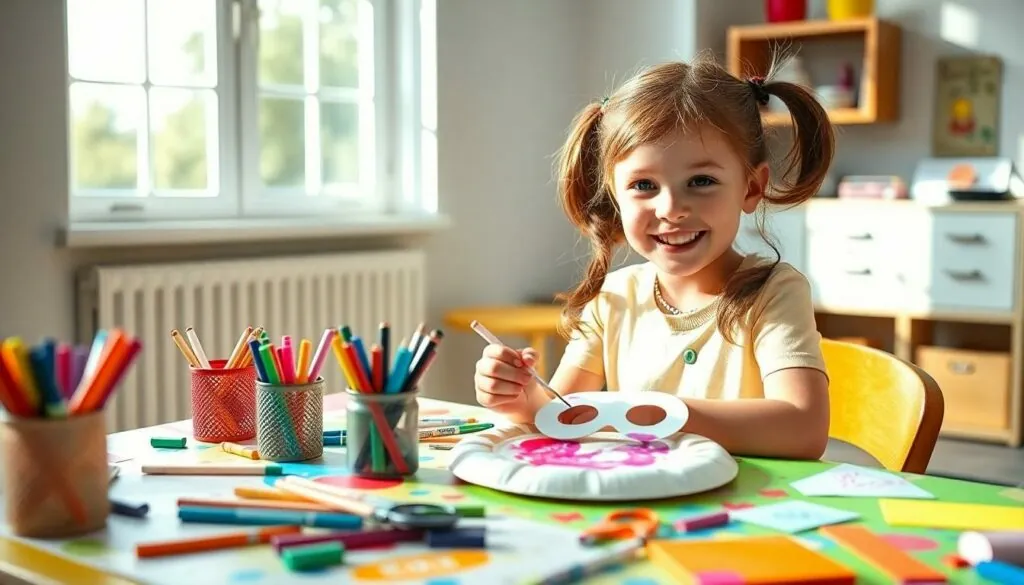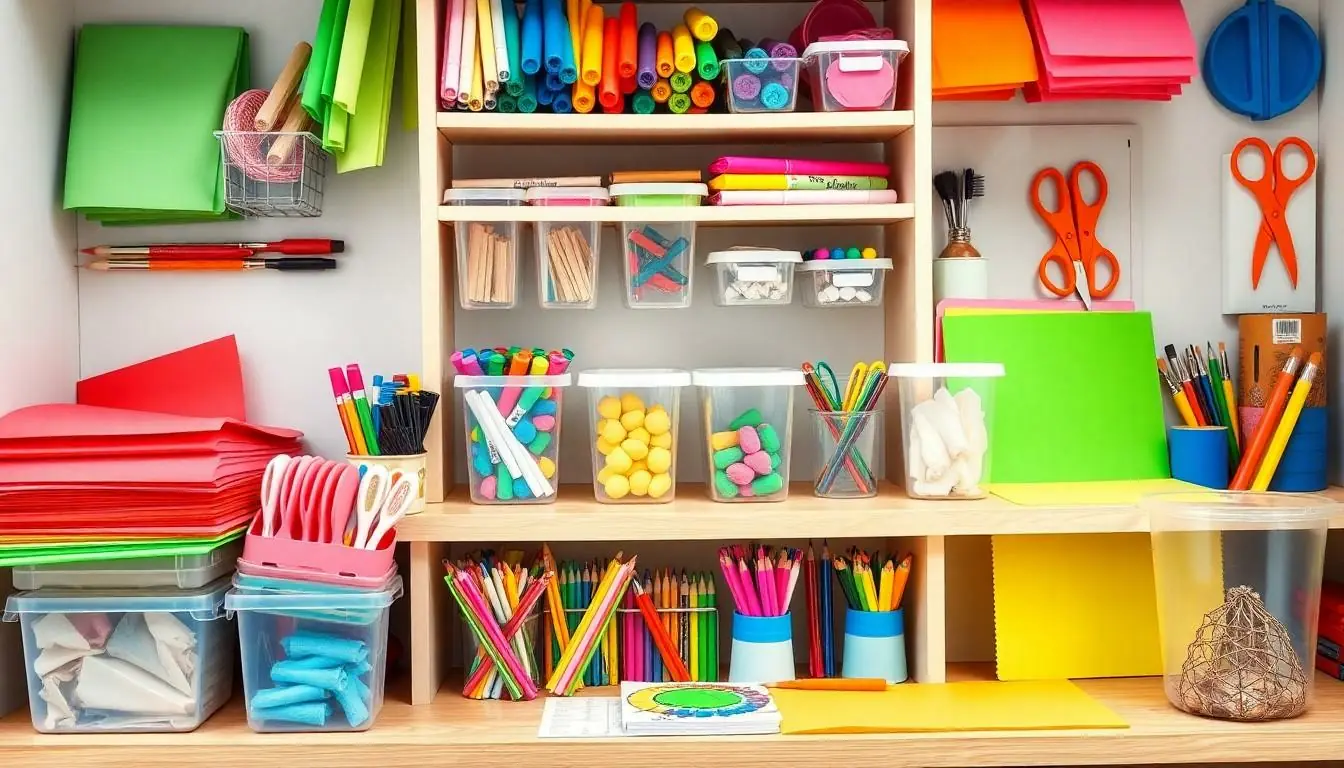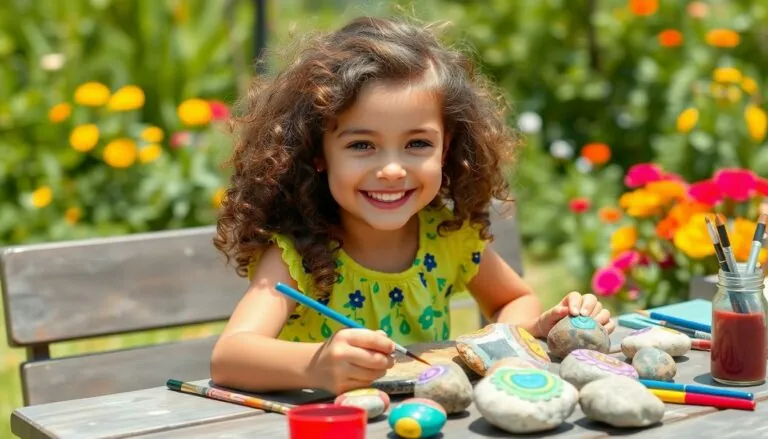Table of Contents
ToggleKeeping little hands busy and minds engaged doesn’t have to break the bank or require a trip to the craft store. DIY crafts offer the perfect opportunity for kids to explore their creativity while developing essential motor skills and having a blast in the process.
From turning ordinary paper plates into vibrant animal masks to transforming empty toilet paper rolls into magical castles these simple craft projects prove that imagination knows no bounds. Parents will love that most of these activities use everyday household items they already have lying around. Plus there’s nothing quite like watching a child’s face light up when they create something special with their own two hands.
Benefits of DIY Crafts for Child Development
DIY crafts play a vital role in children’s cognitive emotional development. These hands-on activities engage multiple senses simultaneously creating neural pathways that support learning.
Building Creative Thinking Skills
DIY crafts foster creative problem-solving abilities in children through open-ended exploration. Children learn to transform basic materials like cardboard boxes popsicle sticks paper plates into unique creations. The process of visualizing possibilities experimenting with different combinations selecting colors developing patterns strengthens their imaginative capabilities. Kids who engage in regular craft activities demonstrate increased flexibility in approaching challenges finding alternative solutions adapting to changes. A child turning a paper plate into a lion’s face learns to associate shapes with real-world objects combine materials in innovative ways express artistic vision.
Enhancing Fine Motor Skills
Craft activities strengthen the small muscles in children’s hands fingers through precise movements coordination. Tasks like cutting paper folding origami threading beads drawing shapes develop finger dexterity hand-eye coordination. These refined motor skills translate directly to essential life tasks: writing holding utensils tying shoelaces buttoning clothes. Regular engagement in activities such as coloring within lines manipulating clay forming shapes with playdough improves grip strength finger control spatial awareness. Research indicates children who participate in craft activities 3-4 times weekly show marked improvement in handwriting skills manual dexterity tool manipulation.
Essential Craft Supplies for Kids’ Projects
Successful craft projects start with a well-stocked supply cabinet. Creating a dedicated craft space with organized materials encourages children’s creativity while ensuring quick access to essential items.
Basic Materials to Keep on Hand
A comprehensive craft supply collection includes these fundamental items:
- Construction paper in 10-12 different colors
- White glue bottles (4 oz size)
- Child-safe scissors with rounded tips
- Washable markers in 8-10 color sets
- Colored pencils in 12-24 packs
- Craft sticks in natural wood finish
- Pipe cleaners in assorted colors
- Drawing paper (80-100 gsm weight)
- Clear tape dispensers
- Plastic containers for storage
- Paintbrushes in 3 sizes (small, medium, large)
- Washable tempera paint in primary colors
Safety Guidelines for Craft Time
- Store sharp tools like scissors in locked containers
- Select non-toxic materials labeled AP (Approved Product)
- Keep craft supplies at child-height shelves
- Use plastic mats to protect surfaces
- Maintain proper ventilation in craft areas
- Supervise use of adhesives glues
- Wash hands before after crafting
- Remove loose clothing jewelry
- Keep first aid supplies nearby
- Clean spills immediately
- Use smocks to protect clothing
- Store materials in labeled containers
Paper-Based DIY Craft Ideas
Paper crafts offer endless creative possibilities using affordable materials found in most homes. These projects combine artistic expression with basic folding techniques to create memorable keepsakes.
Colorful Paper Chain Decorations
Creating paper chains transforms basic construction paper into festive decorations. Cut paper strips measuring 1×6 inches in rainbow colors like red, blue, yellow, green, orange, purple. Loop the first strip into a circle, securing ends with glue or tape. Thread the next strip through the first loop, forming a connected circle. Continue this pattern until reaching the desired length. Kids customize their chains by alternating colors, creating patterns, or adding glitter. These chains work perfectly for birthdays, holidays, classroom decorations or bedroom accents.
Simple Origami Projects
Origami introduces children to basic geometric concepts through paper folding. Starting with 6×6-inch squares of origami paper, kids create classic designs like jumping frogs, flying birds, sailing boats. The frog design uses 8 precise folds to create a hopping toy. Paper cranes require 12 basic folds to complete their elegant shape. Boats incorporate 6 folds to form a floating vessel. Each project builds spatial awareness skills while producing a functional paper creation. Multi-colored origami paper adds visual appeal to finished crafts.
Nature-Inspired Craft Projects
Nature offers an abundance of free craft materials for children to explore their creativity. These outdoor-sourced supplies create unique opportunities for kids to connect with the environment while making art.
Rock Painting Activities
Rock painting transforms ordinary stones into colorful masterpieces. Kids start by collecting smooth rocks from their backyard or local park. Acrylic paints bring characters to life on the rock surface, from ladybugs to monsters to underwater creatures. Adding googly eyes, patterns or simple messages personalizes each creation. The finished painted rocks serve as paperweights, garden decorations or hide-and-seek treasures for neighborhood scavenger hunts. This activity develops fine motor skills through detailed brushwork while encouraging outdoor exploration.
Leaf and Flower Art
Pressed flowers and leaves form the foundation for natural collages and prints. Children gather fallen leaves, petals and blooms during nature walks. Placing the collected items between heavy books preserves their shapes and colors. The dried specimens create striking artwork when arranged on paper or cardstock. Kids press leaves onto ink pads to make nature prints or incorporate dried flowers into handmade cards. This craft combines artistic expression with scientific observation as children learn to identify different plant species. The finished pieces capture seasonal changes through natural materials.
Recycled Materials Crafts
Recycled materials transform into engaging craft projects while teaching children about environmental responsibility. These eco-friendly crafts combine creativity with sustainability using items commonly found in household recycling bins.
Cardboard Box Creations
Cardboard boxes offer endless possibilities for creative play. Children turn standard shipping boxes into castles with cut-out windows towers built from paper towel rolls. Empty cereal boxes become puppet theaters with stage curtains made from fabric scraps. Small electronics packaging creates miniature doll furniture painted with non-toxic acrylic colors. Kids construct robots using various box sizes connected with brass fasteners allowing movable joints. Storage boxes transform into race cars with paper plate wheels bottle cap headlights. Large appliance boxes become playhouses decorated with markers stickers craft paper windows.
Plastic Bottle Art Projects
Empty plastic bottles serve as versatile crafting materials for unique creations. Kids craft flower vases by cutting decorative patterns into 2-liter bottles painting them with permanent markers. Smaller bottles become piggy banks with cork stoppers decorated using adhesive gems ribbons. Bottle bottoms transform into stamp tools for painting creating circular patterns textures. Children build bird feeders using cross-cut bottles filled with birdseed hung with twine. Clear bottles become sensory toys filled with colored water glitter beads sealed tightly. Bottle caps create mosaics when arranged glued onto cardboard bases painted various colors.
Quick and Mess-Free Craft Ideas
These craft projects require minimal setup time with easy cleanup, making them perfect for busy parents or classroom activities. Each project uses readily available materials to create engaging artistic experiences for children ages 4-12.
Popsicle Stick Crafts
Popsicle sticks transform into versatile building materials for creative projects. Kids create picture frames by arranging four sticks in a square pattern then decorating with stickers, glitter glue or paint. Craft stick puppets come to life with markers, googly eyes plus colorful yarn for hair. Building projects include miniature houses using 6-8 sticks glued together vertically then topped with a triangular roof. Advanced crafters construct jewelry boxes by layering sticks horizontally to form walls then adding a hinged lid. These projects develop spatial awareness skills while providing 30-45 minutes of focused creative time.
Yarn and String Projects
Yarn crafts offer tactile experiences with minimal cleanup requirements. Children weave friendship bracelets using three colored strands braided together in 15-20 minutes. Paper plate dream catchers emerge by wrapping yarn in web patterns through 8 pre-punched holes around the rim. God’s eyes take shape as kids wrap yarn around two craft sticks in alternating colors. Yarn painting activities involve dipping string in washable paint then pressing it between folded paper to create symmetrical patterns. These projects enhance fine motor coordination through wrapping, threading plus knotting techniques.
Holiday-Themed DIY Crafts
Holiday crafts transform ordinary materials into festive decorations while teaching children about different celebrations throughout the year. These projects combine creativity with cultural learning experiences.
Seasonal Decorations
Creating handprint turkeys celebrates Thanksgiving with colorful paper art. Kids paint their palms brown for the body then add bright finger feathers in red orange yellow. Paper snowflakes enhance winter decor using basic folding cutting techniques. Easter egg suncatchers made from tissue paper glue onto clear contact paper creating vibrant window displays. Halloween ghost garlands use cotton balls string to create spooky decorations. Fourth of July wind spinners incorporate red white blue ribbons onto paper plates for patriotic outdoor displays.
Special Occasion Cards
Handmade cards allow children to express heartfelt messages through artistic designs. Birthday cards feature pop-up elements using simple paper engineering techniques. Valentine’s Day cards incorporate heart-shaped stamps made from potato halves dipped in paint. Christmas cards showcase fingerprint reindeer with googly eyes red pom-pom noses. Mother’s Day cards display pressed flower designs between folded cardstock paper. Father’s Day cards feature hand-drawn ties decorated with markers glitter. Each card becomes a personalized keepsake showcasing a child’s creativity thoughtfulness.
| Holiday | Materials Needed | Time to Complete |
|---|---|---|
| Christmas | Paper, Cotton, Glitter | 20-30 minutes |
| Easter | Tissue Paper, Contact Paper | 15-20 minutes |
| Halloween | Cotton Balls, String | 10-15 minutes |
| Valentine’s Day | Paper, Paint, Potatoes | 25-30 minutes |
Conclusion
DIY crafts offer children an incredible opportunity to explore their creativity while developing essential life skills. These engaging activities provide more than just entertainment – they’re valuable tools for cognitive development motor skills and emotional growth.
From paper-based projects to eco-friendly creations the possibilities are endless. Parents and educators can easily implement these activities using readily available materials while creating lasting memories with their children.
The magic of DIY crafts lies in their ability to transform simple materials into extraordinary creations. By incorporating these activities into a child’s routine they’ll develop crucial skills that’ll benefit them throughout their lives while having fun in the process.








